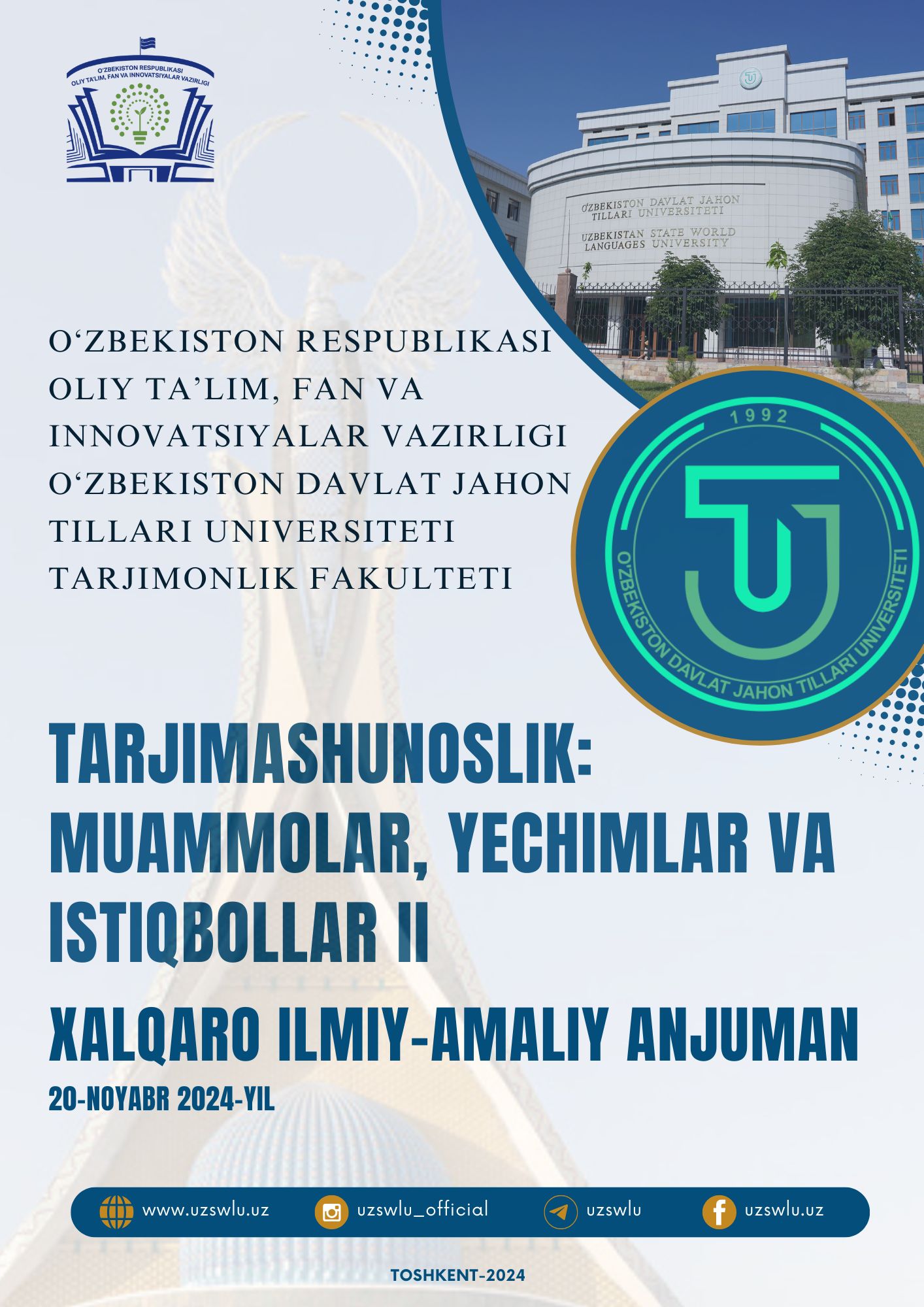TRANSLATING EMOTION: HOW CULTURAL NUANCES AFFECT THE INTERPRETATION OF EMOTIONAL EXPRESSIONS IN LITERATURE
Kalit so‘zlar
word-for-word translation, non-verbal cue, Zen philosophy, cross- linguistic communication.Annotasiya
Translating emotions in literature presents unique challenges that go beyond mere word-for-word translation, as emotions are deeply embedded in cultural and linguistic contexts. This article explores how cultural nuances shape the expression and perception of emotions, making their accurate translation a complex and creative endeavor. By examining untranslatable emotional concepts, the role of tone and intensity, and the importance of non-verbal cues, this study highlights the difficulties translators face when conveying emotional depth across languages. Additionally, the limitations of machine translation tools in capturing emotional subtleties emphasize the need for human insight in this process. Ultimately, this article argues that translating emotions requires a nuanced understanding of both language and culture, making the translator an essential interpreter of human experiences across borders.
Foydalanilgan adabiyotlar ro‘yhati
Chan, L. (2002). Subtitling and Dubbing: A Case Study of Crouching Tiger, Hidden Dragon. International Journal of Translation Studies, 14(2), 157-175.
Efron, D. (1972). Gesture, Race, and Culture: A Tentative Study of the Spatio Temporal and “Linguistic” Aspects of the Gestural Behavior of Eastern Jews and Southern Italians. Mouton.
Hall, E. T. (1976). Beyond Culture. Anchor Books.
Hogan, P. C. (2019). The Mind and Its Stories: Narrative Universals and Human Emotion. Cambridge University Press.
Juniper, A. (2003). Wabi Sabi: The Japanese Art of Impermanence. Tuttle Publishing.
Jiang, L. (2017). Translating Humor in Media: The Role of Cultural Context in Machine Translation. Translation Studies, 10(2), 161-178.
Katz, A. (2018). The Limits of Machine Translation: Understanding Emotional Nuance. Journal of Language and Politics, 17(3), 356-373.
Matsumoto, D. (2002). The New Japan: Debunking Seven Cultural Stereotypes. Intercultural Press.
Nishida, H. (1996). Communication in Personal Relationships across Cultures. SAGE Publications.
Nida, E. A. (1964). Toward a Science of Translating. Brill Archive.
Venuti, L. (1995). The Translator's Invisibility: A History of Translation. Routledge.
Venuti, L. (2016). The Translator’s Invisibility: A History of Translation. Routledge.
Wierzbicka, A. (1999). Emotions across Languages and Cultures: Diversity and Universals. Cambridge University Press.
Wiking, M. (2016). The Little Book of Hygge: The Danish Way to Live Well. Penguin Life.

